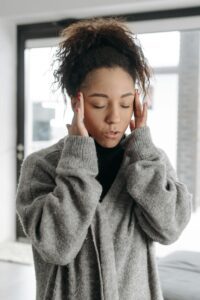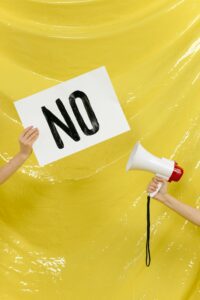How Health Coaching Can Motivate Participants to Set and Achieve Transformative Goals

One of the most rewarding yet challenging tasks is engaging participants to set and commit to meaningful goals. Many clients may feel uncertain, overwhelmed, or even unmotivated to make a change. But as health coaches, your role is pivotal in unlocking their potential for transformation. By using strategies grounded in the Transtheoretical Model (TTM), you can guide clients toward progress and help them achieve sustained success.
Here’s how to meet your clients where they are and support them in creating and achieving transformative goals.
Understand Your Participant’s Stage of Change
Behavioral change isn’t a one-size-fits-all process. The TTM offers a framework to identify where participants are in their readiness for change:
- Precontemplation: Unaware or resistant to change.
- Contemplation: Aware but uncertain about acting.
- Preparation: Ready to set goals and take small steps.
- Action: Actively working toward their goals.
- Maintenance: Sustaining progress and avoiding relapse.
Tailoring your health coaching strategies to each stage ensures that participants feel supported and understood.
Strategies for Each TTM Stage
Precontemplation Stage: Build Awareness
Clients in this stage may not recognize the need for change or see the value in setting goals. Your role is to gently spark curiosity and provide education without overwhelming them.
- Share relatable success stories that mirror their experiences.
- Highlight long-term benefits, focusing on areas they care about, like energy levels, stress management, or work-life balance.
Contemplation Stage: Explore Motivations
At this stage, clients consider change but may feel stuck in weighing pros and cons. Help them build internal motivation.
- Ask open-ended questions: “What would success look like for you?”
- Frame change as an opportunity rather than a burden.
- Provide data or tools that help them visualize progress, like health metrics or case studies.
Preparation Stage: Create Actionable Goals
Once participants are ready, co-create SMART goals (Specific, Measurable, Achievable, Relevant, Time-bound) that align with their values.
- Use digital tools, like habit-tracking apps or fitness platforms, to make goals tangible.
- Offer trial programs or small challenges that provide an early sense of achievement.
Action Stage: Sustain Engagement
Clients actively working toward their goals need consistent reinforcement to stay motivated.
- Introduce gamification, such as earning badges for milestones or participating in friendly competitions.
- Build a support network by connecting participants with peers pursuing similar goals.

Maintenance Stage: Prevent Stagnation
Once participants reach their goals, focus on sustaining momentum and preventing relapse.
- Encourage advanced goal-setting to push boundaries further (e.g., transitioning from walking to running).
- Provide ongoing feedback and celebrate long-term progress with meaningful rewards.
Building Trust and Accountability
Trust is the cornerstone of any health coaching relationship. Participants are more likely to commit to goals when they feel supported.
- Regular Check-Ins: Use these to celebrate wins, address obstacles, and adjust goals.
- Nonjudgmental Coaching: Create a safe space where participants can openly share setbacks without fear of criticism.
By fostering accountability through trust, you strengthen the participant-coach bond, leading to greater adherence and success.
Celebrate Progress, Not Just Outcomes
Many clients struggle with feeling that only the end result matters. Shift the focus to celebrating progress to keep motivation high.
- Recognize small milestones, like completing their first week of meal prep or walking consistently for a month.
- Offer creative rewards, such as personalized achievement certificates, social media shoutouts, or early access to premium coaching content.
Closing Thoughts
Engaging participants in goal setting is both an art and a science. By leveraging the Transtheoretical Model and tailoring strategies to their readiness for change, health coaches can empower clients to unlock their potential. From sparking initial awareness to celebrating sustained success, every stage of the journey matters.
























 If you’re reading this, chances are you’re navigating the exciting but challenging moments of rapid growth. Maybe your company is doubling in size, or you’re adding new layers of management for the first time. Exciting, right? But let’s be honest: it’s also a bit terrifying, especially when it comes to preserving the unique company culture that has made your team successful.”
If you’re reading this, chances are you’re navigating the exciting but challenging moments of rapid growth. Maybe your company is doubling in size, or you’re adding new layers of management for the first time. Exciting, right? But let’s be honest: it’s also a bit terrifying, especially when it comes to preserving the unique company culture that has made your team successful.” One CEO of a software startup described their wake-up call: a top-performing employee resigned, citing a “disconnect” between the company’s stated values and how decisions were being made. “It hit me hard,” the CEO admitted. In response, they launched leadership training for all managers, emphasizing how to embody company values in everyday decisions. They also created a “values in action” award, recognizing employees who exemplified the culture.
One CEO of a software startup described their wake-up call: a top-performing employee resigned, citing a “disconnect” between the company’s stated values and how decisions were being made. “It hit me hard,” the CEO admitted. In response, they launched leadership training for all managers, emphasizing how to embody company values in everyday decisions. They also created a “values in action” award, recognizing employees who exemplified the culture.





